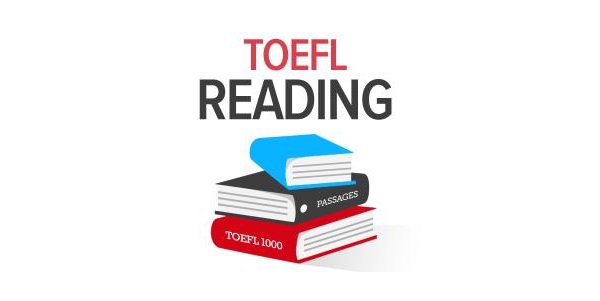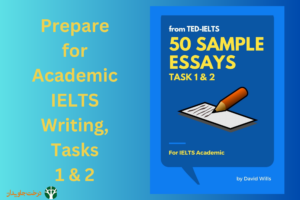بخش ریدینگ آزمون تافل: نمونه سؤال ریدینگ تافل ، به همراه پاسخ

ریدینگ تافل
در بخش ریدینگ تافل ibt شما سه یا چهار متن را می خوانید و به سوالات آن پاسخ می دهید. این سوالات انواع مختلفی دارد و مهارت درک مطلب شما را از زوایای مختلف می سنجد. خواندن متون مختلف و مرور نمونه سؤالات ، بهترین روش برای آماده شدن برای این بخش از آزمون است. در ادامه یک نمونه سؤال ریدینگ تافل را بهمراه پاسخ سوالات مرور میکنیم.
نمونه سؤال ریدینگ تافل
Smart Energy
The next few decades will see great changes in the way energy is supplied and used. In some major oil producing nations, ‘peak oil’ has already been reached, and there are increasing fears of global warming. Consequently, many countries are focusing on the switch to a low carbon economy. This transition will lead to major changes in the supply and use of electricity. [A] Firstly, there will be an increase in overall demand, as consumers switch from oil and gas to electricity to power their homes and vehicles. [B] Secondly, there will be an increase in power generation, not only in terms of how much is generated, but also how it is generated, as there is growing electricity generation from renewable sources. [C] To meet these challenges, countries are investing in Smart Grid technology. [D] This system aims to provide the electricity industry with a better understanding of power generation and demand, and to use this information to create a more efficient power network.
Smart Grid technology basically involves the application of a computer system to the electricity network. The computer system can be used to collect information about supply and demand and improve engineer’s ability to manage the system. With better information about electricity demand, the network will be able to increase the amount of electricity delivered per unit generated, leading to potential reductions in fuel needs and carbon emissions. Moreover, the computer system will assist in reducing operational and maintenance costs.
Smart Grid technology offers benefits to the consumer too. They will be able to collect real-time information on their energy use for each appliance. Varying tariffs throughout the day will give customers the incentive to use appliances at times when supply greatly exceeds demand, leading to great reductions in bills. For example, they may use their washing machines at night. Smart meters can also be connected to the internet or telephone system, allowing customers to switch appliances on or off remotely. Furthermore, if houses are fitted with the apparatus to generate their own power, appliances can be set to run directly from the on-site power source, and any excess can be sold to the grid.
With these changes comes a range of challenges. The first involves managing the supply and demand. Sources of renewable energy, such as wind, wave and solar, are notoriously unpredictable, and nuclear power, which is also set to increase as nations switch to alternative energy sources, is inflexible. With oil and gas, it is relatively simple to increase the supply of energy to match the increasing demand during peak times of the day or year. With alternative sources, this is far more difficult, and may lead to blackouts or system collapse. Potential solutions include investigating new and efficient ways to store energy and encouraging consumers to use electricity at off-peak times.
A second problem is the fact that many renewable power generation sources are located in remote areas, such as windy uplands and coastal regions, where there is currently a lack of electrical infrastructure. New infrastructures therefore must be built. Thankfully, with improved smart technology, this can be done more efficiently by reducing the reinforcement or construction costs.
Although Smart Technology is still in its infancy, pilot schemes to promote and test it are already underway. Consumers are currently testing the new smart meters which can be used in their homes to manage electricity use. There are also a number of demonstrations being planned to show how the smart technology could practically work, and trials are in place to test the new electrical infrastructure. It is likely that technology will be added in ‘layers’, starting with ‘quick win’ methods which will provide initial carbon savings, to be followed by more advanced systems at a later date. Cities are prime candidates for investment into smart energy, due to the high population density and high energy use. It is here where Smart Technology is likely to be promoted first, utilising a range of sustainable power sources, transport solutions and an infrastructure for charging electrically powered vehicles. The infrastructure is already changing fast. By the year 2050, changes in the energy supply will have transformed our homes, our roads and our behaviour.
Questions:
1 According to paragraph 1, what has happened in some oil producing countries?
B They are not producing as much oil as they used to.
C The supply of oil is unpredictable.
D Global warming is more sever here than in other countries.
There is also likely more electricity generation centres, as households and communities take up the opportunity to install photovoltaic cells and small scale wind turbines.

B
C
D

B It can tell them how much energy each appliance is using.
C It can allow them to turn appliances on and off when they are not at home.
D It can reduce the amount of energy needed to power appliances.

B They often cause system failure and blackouts.
C They do not supply a continuous flow of energy.
D They can’t be used at off-peak times.

B People in cities will be using cars and buses powered by electricity.
C All buildings will generate their own electricity.
D Smart Grid technology will only be available in cities.

B crowded
C attractive
D alone

B complete
C beneficial
D in progress
8 17 What is the main idea of the final paragraph? (paragraph 6).
B To outline the advantages of Smart Grid technology.
C To summarise the main ideas in the previous paragraphs.
D To describe how, where and when Smart Technology will be introduced.
9 In paragraph 6, what can be inferred about the introduction of Smart Grid Technology?
B The cheapest technologies will be introduced first.
C The technologies which are most difficult to put into place will be introduced first.
D Technologically advanced systems will be introduced first.
Answers:
- B 2. C, 3. D, 4. C, 5. B, 6. A, 7. A, 8. D, 9. A
مطالب زیر نیز مفیدند:
نمونه سوال کامل اسپیکینگ آزمون تافل (بخش اول)
دانلود رایگان مجله New Scientist؛ (May 9th, 2020)
Tag:Reading, TOEFL, تافل, ریدینگ, ریدینگ تافل, نمونه سؤال



